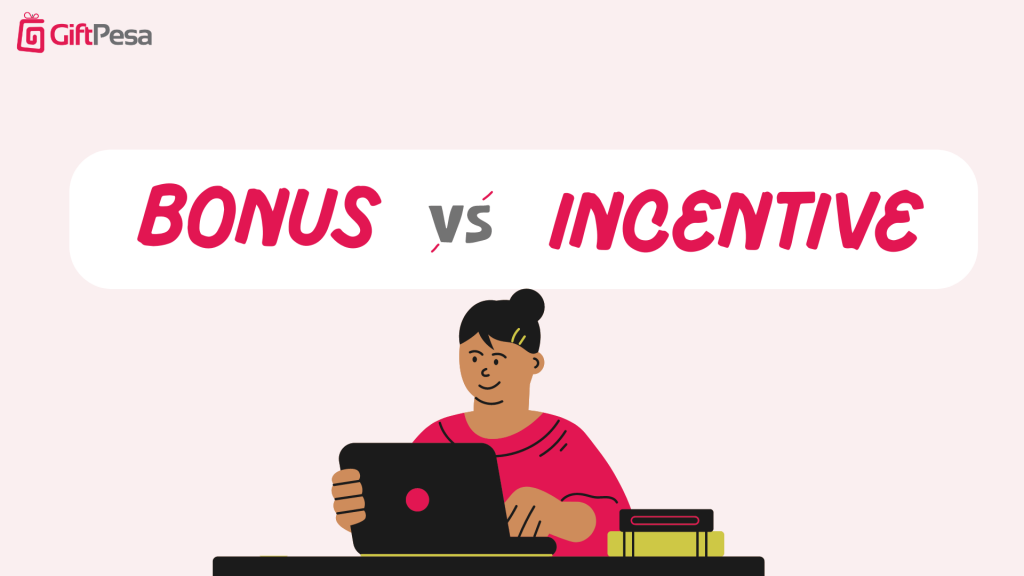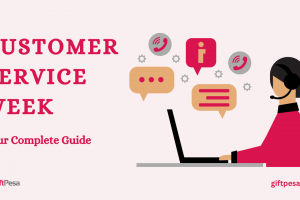The terms bonus and incentive are often used interchangeably. But should they? Do bonuses and incentives serve the same purpose?
According to research, using incentives to reward employees can lead to an average of 44% increase in business revenue. This explains why many managers in HR, Sales, and Business Development roles are running employee rewards programs using a mix of bonuses and incentives.
While the employees being rewarded may not care much what term is used, differentiating between the two will help you strategize better and improve your employee rewards program.
What Is a Bonus?
A bonus is a payment given to employees—in addition to their salaries—for meeting or exceeding pre-defined performance criteria. Bonuses are normally one-time payments that reward past achievements, and their criteria can vary widely—from individual performance and team achievements to company-wide success.
Key Characteristics of Bonuses
Here are three key characteristics of bonuses to help you understand their use.
- Timing: Bonuses are usually given after achieving a goal or meeting a target. This might be at the end of the year, after a project is completed, or when specific financial targets are met.
- Purpose: Bonuses are designed to reward employees for past performance. They help you show appreciation for your employees’ hard work and dedication.
- Structure: Bonuses come in various forms including cash payouts, stock options, profit-sharing, or even non-monetary rewards like additional vacation days.
What Are Incentives?
Incentives are motivational tools designed to encourage employees to achieve specific future goals or behaviors, often through rewards like cash, vouchers, or other perks. Incentives work like promises with a condition, where you tell employees they will get reward ‘X’ if they achieve goal ‘Y’.
Key Characteristics of Incentives
Here are three key characteristics of incentives:
- Timing: Incentives are offered before the desired behavior or performance occurs, setting a clear goal that employees work towards.
- Purpose: The main goal of an incentive is to motivate employees to meet or exceed specific targets, driving behaviors that align with company objectives.
- Structure: Incentives can also take various forms, including cash rewards, digital gift vouchers, trips, or special perks.
When to Use Bonuses vs. Incentives
To make the most of bonuses and incentives, it helps to know when to use either of these reward strategies. Here is a quick breakdown of when to use each.
Bonuses are ideal for:
- Rewarding past performance: When an employee or team has gone above and beyond, a bonus serves as a tangible acknowledgment of their contribution.
- Retaining talent: By offering annual bonuses linked to business goals, you’re essentially rewarding loyalty and good performance, thus boosting employee retention.
- Encouraging company-wide success: Profit-sharing bonuses can encourage all employees to work towards the company’s overall success and stay with a company for longer.
Incentives are best for:
- Driving specific results: If you want to encourage specific actions, such as hitting sales targets or completing a project ahead of schedule, use incentives.
- Aligning employee goals with business objectives: Incentives can be tailored to align with broader company goals, ensuring that employees’ efforts are directed where they’re most needed.
- Promoting a competitive environment: Incentives can foster a healthy sense of competition among employees, driving higher performance across the board.
Practical Example of When to Use Bonuses and Incentives
Imagine a sales team working towards a quarterly target. The company might offer an incentive such as a cash prize or extra paid time off, for reaching individual sales goals during that quarter. This motivates team members to push harder in the short term.
On the other hand, an end-year bonus tied to overall company performance can be used to reward all employees for contributing consistently over the entire year. This will promote long-term commitment and loyalty.
Bonus vs. Incentive: A Comparison Table
For a list of differences between bonuses and incentives, check out the below comparison table.

Conclusion
If you’re an HR professional, team leader, or business owner, understanding the differences between a bonus and an incentive will help you design effective compensation strategies. Ultimately, this will enable you to drive performance, retain top talent, and align your team’s efforts with your company’s long-term goals.
If you’re looking for a reliable employee rewards program, get in touch with us. GiftPesa provides a voucher system for creating digital vouchers that don’t expire and can be redeemed partially at over 3,000 outlets. To learn more, book a demo.








